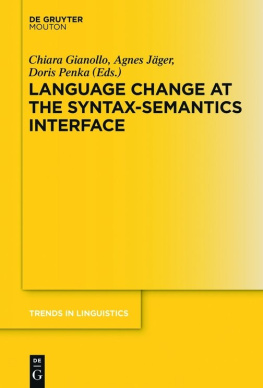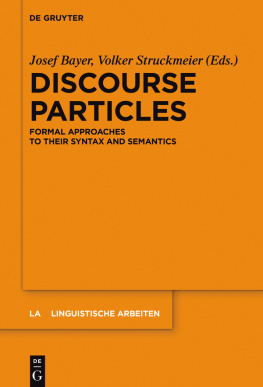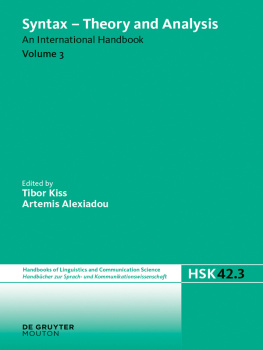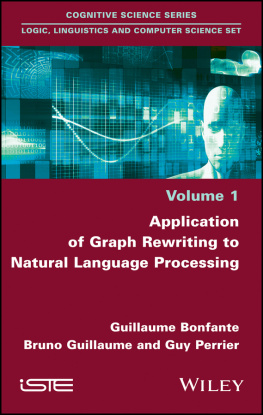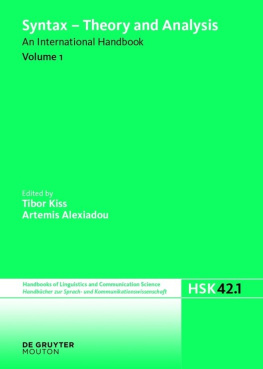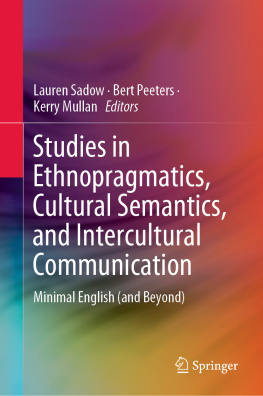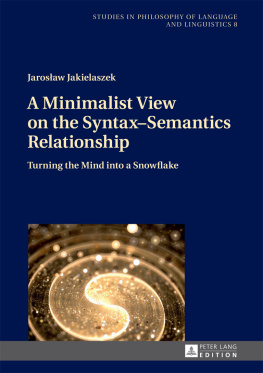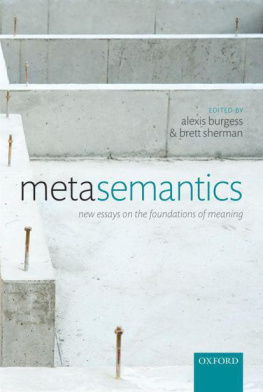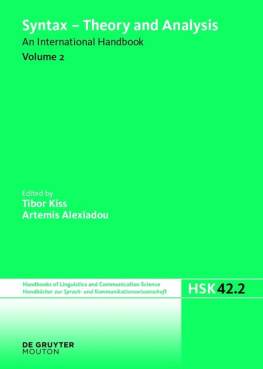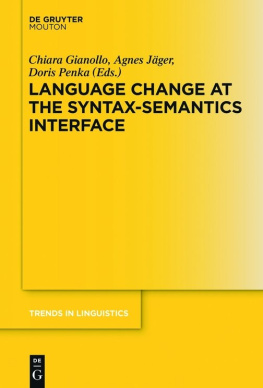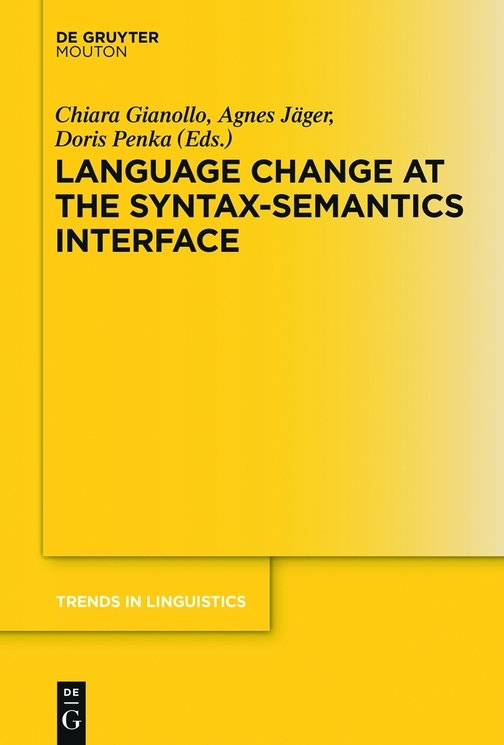Contemporary historical linguistics has greatly profited from the interaction with synchronic theory building, and, in turn, thanks to its significant results, has contributed in shaping the more general research agenda in linguistics. The syntax-semantics interface has become salient in historical linguistics due to a number of theoretical, empirical and methodological advances. Nonetheless, diachronic syntax and semantics have largely developed as separate disciplines. In particular, formal frameworks have been extended to the investigation of diachrony much earlier in syntax than in semantics. For syntax, Lightfoot (1979) opened the way to the application of generative models of syntactic structure and language competence to historical questions. This research direction gained momentum in connection with the synchronic study of cross-linguistic variation within the Principles and Parameters approach. In semantics, the first ground-breaking work to provide a truth-conditional account of change in functional meaning, and to formalize general principles guiding it, is Eckardt (2006). If theory building by formalization has proceeded separately in syntax and semantics until now, empirical comparative work at the syntax-semantics interface has been experiencing a surge in interest among diachronic linguists of all persuasions in the last decades.
2.1 Grammaticalization
A privileged area of research, where historical syntax and semantics naturally meet, is grammaticalization. In grammaticalization phenomena, new exponents of grammatical categories (function words) develop out of pre-existing lexical material, or grammatical elements change their function through time. In the investigation of the lexical development of e.g. complementizers, modal particles, negation exponents, auxiliaries, pronouns, and determiners, syntactic and semantic considerations are necessarily intertwined.
The cross-linguistic investigation of grammaticalization has uncovered a number of interesting generalizations concerning the kind of categories most typically involved, the interaction between phonological, morpho-syntactic, and semantic change, and the types of processes observed. In particular, it has been possible to single out linguistic cycles, that is, cross-linguistically recurrent developments at the syntax-semantics interface, which remarkably go through similar stages. Perhaps the most famous of such cycles is the one affecting negation (Jespersens cycle): it has been extensively studied in diachronic syntax, also thanks to the fact that negation is a synchronically well-studied area in current theoretical semantics and syntax. But many other domains have been shown to offer examples of cyclic development too (aspectual forms, modal verbs, indefinite pronouns, among numerous others, cf. van Gelderen 2011 for a recent comprehensive picture).
This substantial body of empirical work has highlighted the necessity to integrate the methods and research questions of historical syntax and semantics.
On the one hand, syntacticians have been confronted with the fact that the input elements getting grammaticalized as exponents for certain functional categories show a remarkable semantic similarity (e.g. minimizers in the case of negation, demonstratives in the case of definite articles) and undergo parallel extensions or restrictions in their contexts of use in a stepwise fashion. This calls for a semantic explanation, which takes into consideration which part(s) of the meaning trigger grammaticalization, and which elements are retained after the category and structure change.
On the other hand, the limits of an exclusively lexical approach to diachronic semantics have become evident, since semantic change in one word is often accompanied by change in the surrounding structure, and thus in the compositional interface with the interpretive mechanism. It is therefore not productive to draw a rigid dividing line between lexical and propositional semantics in diachronic work. The application of modern compositional theories of meaning can be instrumental in pursuing a better understanding of semantic change.
A number of insights gained from grammaticalization theory have been captured in recent diachronic work within the generative framework (cf. e.g. Roberts and Roussou 2003; van Gelderen 2004, 2011; and Section 4 below). Generative syntactic analyses are usually coupled with a semantic mechanism of bleaching or weakening, which has been first accounted for in a formal framework by von Fintel (1995). However, grammaticalization often brings about the enrichment of some meaning components (cf. Hopper and Traugott 2003; Eckardt 2006; and our Section 4), a process which still awaits a proper syntactic treatment.

